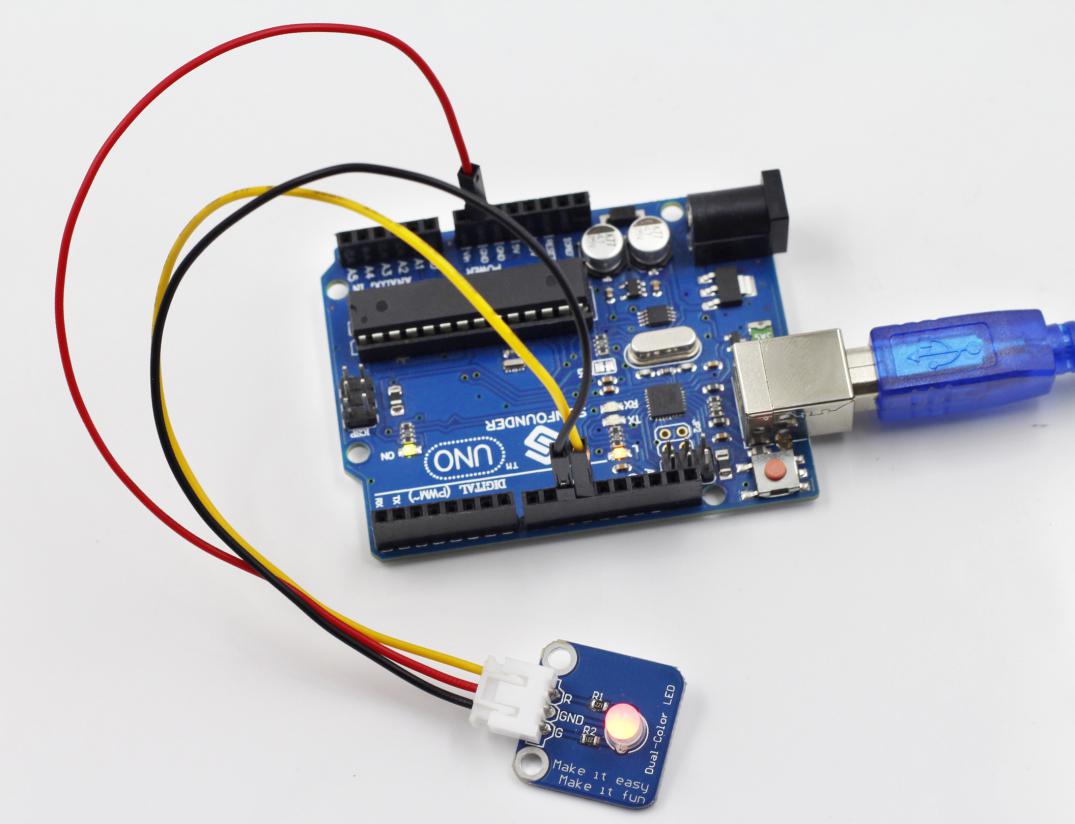Lesson 26 Dual-color LED¶
Introduction

A dual-color light emitting diode (LED) is capable of emitting two different colors of light, typically red and green, rather than only one color. It is housed in a 3mm or 5mm epoxy package. It has 3 leads; common cathode or common anode is available. A dual-color LED features two LED terminals, or pins, arranged in the circuit in anti-parallel and connected by a cathode/anode. Positive voltage can be directed towards one of the LED terminals, causing that terminal to emit light of the corresponding color; when the direction of the voltage is reversed, the light of the other color is emitted. In a dual-color LED, only one of the pins can receive voltage at a time. As a result, this type of LED frequently functions as indicator lights for a variety of devices, including televisions, digital cameras, and remote controls.
Components
1 * SunFounder Uno board
1 * USB data cable
1 * Dual-color LED module
1 * 3-Pin anti-reverse cable
Principle
Control the LED brightness by the digital port. The color of the LED changes from red to green as well as flashes a mixed color.

Experimental Procedures
Step 1: Build the circuit

Step 2: Open the code file
Step 3: Select correct Board and Port
Step 4: Upload the sketch to the SunFounder Uno board
Code
Now, you can see the dual-color LED changes from red to green alternately, as well as flashing a mixed color during the alternation.
